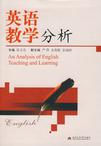英语教学分析
2007-11
西南交通大学出版社
陈文存
195
243000
全书分为五章。第一章分析学习的客体——英语。分析内容主要有:语言的定义和本质,同汉语相比较,英语的一些显著特点,并介绍了几种主要的语言观。第二章主要分析语言学习者和语言学习过程,介绍了几种主要的语言学习观点、学习者个体差异的几个主要方面和学习策略。第三章分析了英语教学的发展趋势。对以学习者为中心、以人为本的语言教学、任务型语言学习与教学、合作学习、互动学习、后方法时代、模块化、超文本化语言教学进行了论述。第四章分析了英语教学的评价问题。涉及评价的基本概念、要素、测试分类、形成性评价的技能、命题步骤和英语试题的编写指南等。第五章分析了英语教师的教育与发展。主要内容有:从教师培训到教师发展、教师教育概述、英语教师的基本素质、新教师与老教师的发展、理念的确立与修正、在职教师的发展、英语教师的角色。 由于国外学者,尤其是北美学者在研究和讨论外语教学时没有区分二语和外语,且常常使用Second Language这一术语。本书在论述时没有对二语和外语作严格区分。 作者心目中的读者是英语教师,包括在职教师和即将成为英语教师的大学生。希望能对他们有所帮助。
引言客体分析要——语言与目的语 1.1 语言分析 1.2 语言的基本观点 1.3 目的语——英语分析 1.4 几个语言术语区分主体分析——语言学习者与学习过程 2.1 对学习的分析 2.2 语言学习的部分研究 2.3 个体差异与二语习得英语教学的发展与趋势分析 3.1 学习者为中心 3.2 人本主义语言教学 3.3 教学中的任务型学习途径 3.4 教学中的合作学习 3.5 语言教学中的互动 3.6 方法的终结?后方法时代 3.7 模块化 3.8 超文本化英语教学的评价分析 4.1 英语教学评价中的基本概念与问题 4.2 评价的基本要素 4.3 测试的分类 4.4 英语教学中形成性评价的技能 4.5 语言测试的命题步骤 4.6 英语试题编写指南英语教师教育与发展分析参考文献
4.1.5 Assessment, Testing, Teaching and Learning Tests may be constructed primarily as devices to reinforce learning and to motivate the student, known as the test is geared to the teaching, or primarily as a means of assessing the student's performance in the language, known as the teaching is often geared largely to the test (Heaton, 1988). We can not expect testing only to follow teaching. What we should demand of it, however, is that it should be supportive of good teaching. At present, tests should be constructed to measure the candidate's success in performing purposeful and relevant tasks and their actual ability to communicate in the language. However, most tests are norm-referenced and too many teachers gear their teaching towards an ill-defined "average group" without taking into account the abilities of those students in the class who are at either the end of the scale. How testing helps students learning English and how testing helps teachers of English? Take classroom tests as an example. A good classroom test can help students create positive attitudes toward the class-a sense of accomplishment and benefit students by helping them master the language study when they prepare for exams and when exams are returned and discussed as soon as possible, requiring them to study hard, emphasizing course objectives, and showing them where they need to improve. A good classroom test also helps teachers to evaluate individual performance, locate the precise areas of difficulty encountered by the class of individuals, and evaluate the effectiveness of the syllabus, method and materials. We can have a better understanding of the relationship between assessment, testing, teaching, and learning by the following examples: We believe that humans want to learn and learning is an innate and lifelong process. Therefore educators expect that all people can learn. They maintain challenging expectations for all learners. They are passionate about learning model, curiosity and persistence. Therefore, the primary purpose for assessment is to improve learning. Assessment provides all learners with the capacity to demonstrate what they know, value and are able to do. We believe that learners are unique and they determine their own learning. Therefore educators recognize individual differences and demonstrate care for and understanding of each learner. They include and maximize the participation of learners of different abilities and backgrounds. They apply a relevant range of teaching approaches and strategies and negotiate with learners about learning goals, activities, issues and contexts. As a result, learners self-assess and develop their capacity to monitor their own learning and negotiate assessment criteria and assessment tasks. ……

全英的,还没仔细看,粗看一下,有些新内容。是编的,不是著的,有些地方衔接不是很好。